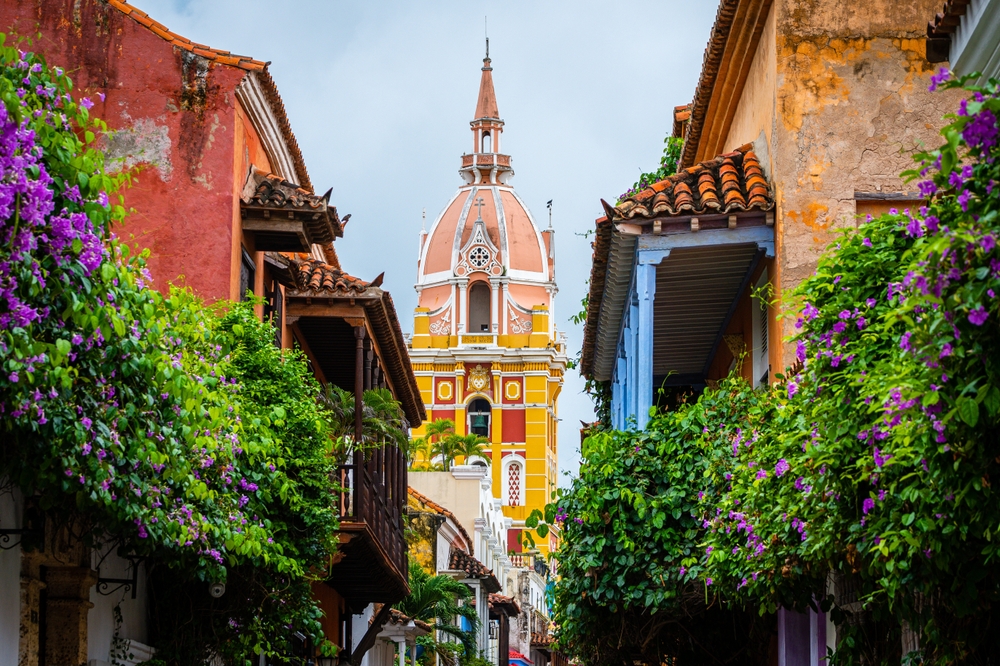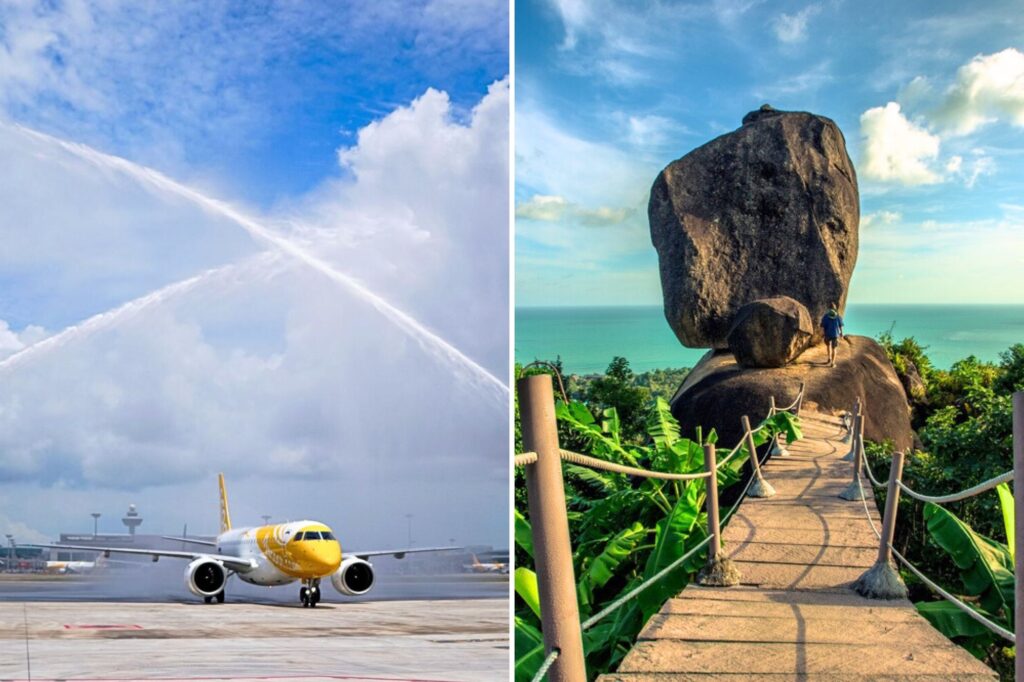If you take a look at the destinations to which airlines are extending new routes these days, you might notice one particular factor: most of the new flights are not to big, dazzling capitals, but rather to smaller, lesser-known cities.
Known as secondary or tertiary destinations, these locations are either non-capital cities within a country, or capital cities that are still considered to be off the beaten track as tourist destination choices.
Exploring tertiary destinations was established as a rising trend just prior to the outbreak of the pandemic. According to a 2018 Expedia report, travelers were already interested in exploring secondary destinations such as Chiang Mai in Thailand, the Azores in Portugal, and Cartagena in Colombia.

In 2019, Luca Franco, CEO and Founder of Luxury Frontiers, a specialist firm focusing on alternative architecture and interior design, wrote that over-tourism and the collective desire to go off the grid were two factors that had contributed to the rise of secondary cities, citing Sedona, Arizona and San Juan Islands in Washington State as examples.
When borders reopened after the pandemic, revenge travel came out in full force, as people revisited their favorite capital destinations and travelers simply made up for lost time.
To disperse tourists and avoid overcrowding, tourism boards and governments in the Asia Pacific region (APAC) started pushing and marketing secondary cities as destinations that could provide new and enriching experiences.
In Thailand, the country’s Chamber of Commerce and the Tourism Authority (TAT) focus for 2024 is the development of a number of select secondary cities as potential tourism destinations. These include Kanchanaburi, a town 130 kilometers west of Bangkok, which is being promoted as a filmmaking hub, and Chanthaburi in east Thailand, which boasts diverse food specialties and delicacies as selling points.
In 2023, tourism boards of secondary destinations and regions around Japan joined the Japan National Tourism Organization (JNTO) Incentive Travel Business Meetings in Singapore to meet with travel and tourism companies in an incentive-based collaboration.
A JNTO spokesperson was quoted in travel publication TTGMice.saying: “One of Japan’s strengths is that there are many cities other than Tokyo that have sufficient capacity to conduct MICE (meetings, incentives, conferences and exhibitions) in. According to the ICCA statistics for 2022, 17 Japanese cities were ranked within the top 100 cities for number of in-person meetings in the Asia-Pacific region.”
Apart from government and tourism board promotions, a clear indication of demand for secondary destinations is airlines announcing flight launches to these lesser-known cities.
Within the APAC region, airlines are starting to connect to smaller regions from central hubs, and there’s been a visible rise in narrowbody aircraft orders too.
Embraer entering Southeast Asia via Scoot
In April 2024, low-cost carrier Scoot welcomed the first of nine Embraer E190-E2 aircraft into its fleet. Scoot is the first Singaporean carrier to take delivery of E190-E2s. Prior to their arrival, Scoot’s fleet consisted entirely of the Airbus A320 family and Boeing 787 Dreamliners.
Scoot has predominantly used its widebodies to far-flung destinations from Singapore such as Athens, Berlin and Jeddah. Within the Asia Pacific (APAC) region, Scoot offers flights to mid-haul destinations such as Sydney and Melbourne down under, and Sapporo and Seoul in North Asia.
In 2023, Scoot was named the ‘World’s Best Long Haul Low-Cost Airline’ by Skytrax.
However, since the Embraer jets entered the carrier’s fleet, it appears that Scoot is now focusing on lesser-known destinations which are nevertheless nearby.
In an Executive Spotlight interview with AeroTime at the 2024 Singapore Airshow, Scoot COO CK Ng said that the single-aisle Embraer E190-E2 would give Scoot the chance to “experiment” with new routes and explore new frontiers.
“The Embraer E190-E2 basically will allow us to fly to places where we find that, if we operate with the conventional A320 or the 787s, will be over capacitated,” Ng explained. “There are some places where we think we don’t have that kind of capacity yet.”
Embraer’s outlook on the Asia-Pacific region is almost identical. During a 2024 Singapore Airshow media roundtable, Adam Young, Embraer Vice President Marketing for APAC, said that the company has seen a rise in demand for secondary cities or tertiary destinations in the region.
Young added that the market shift to secondary cities, which often have smaller airports, will spark a demand in Asia-Pacific for small narrowbody aircraft such as the E190-E2.
In March 2024, Scoot revealed the first six destinations to which its new Embraer E190-E2 plane will fly, all of them being secondary cities:
New destinations:
- Koh Samui Airport (USM)
- Sibu International Airport (SBW)
Existing destinations:
- Hat Yai International Airport (HDY)
- Sultan Ahmad Shah Airport (KUA)
- Krabi International Airport (KBV)
- Miri International Airport (MYY)
Qantas’ new Embraer hub
In 2022, Australian flag carrier Qantas established an Embraer E190 jet base hub at Darwin Airport (DRW) in the country’s Northern Territory.
Qantas said that at least four E190s were based in Darwin to service key QantasLink routes across Australia, as well as a new international passenger service from Darwin to Dili, the capital of Timor-Leste, or East Timor.
The Embraer jets are being deployed on Qantas’ network as part of a three-year deal with Alliance Airlines, intended to ramp up domestic flights and increase connections and schedules between smaller capital cities and regional centers.
The size and range of the E190 aircraft has opened up more flights on existing routes, as well as new routes that would not have been viable with larger aircraft.
In January 2024, Qantas announced that it will use its fleet of E190 aircraft to launch direct flights from Darwin Airport to Singapore Changi Airport (SIN), commencing from December 2024.
Central Asia
Central Asia is composed mainly of the ‘stan’ countries: Kazakhstan, Kyrgyz Republic, Tajikistan, Turkmenistan, and Uzbekistan, along with some parts of Afghanistan, Iran, Pakistan, China, Mongolia, and Russia.
The area as a whole can be considered a secondary region as a tourist destination, but nevertheless, in 2024 airlines are launching new flights to Central Asia.
What makes Central Asia so appealing, and markedly different from other secondary or tertiary destinations, are the factors behind its growth.
February 2024 analysis by East Asia Forum stated that, despite an energy crisis, Central Asia enjoyed economic growth and avoided major conflicts in 2023, and the same is expected for 2024.
The report said that Central Asia’s economic performance had exceeded expectations during 2023, and that the war in Ukraine was a major factor for this success.
All countries in Central Asia strengthened economic engagement with Russia as they filled the vacuum created by the departure of international companies from Russia and benefitted from the relocation of Russian firms.
“Helping Moscow with running secretive imports of banned Western goods and technology proved particularly lucrative for many Central Asian entrepreneurs,” the report claimed.
As these countries rose steadily, so did their economic ties with countries outside of Russia, leading to a number of commercial carriers launching flights to the region.
Qatar Airways
In June 2024, Qatar Airways officially launched its inaugural flight from Doha Hamad International Airport (DOH) to Islam Karimov Tashkent International Airport (TAS), marking the start of four-times-weekly flights on the carrier’s A320 fleet.
Mohamed Faleh Al Hajri, Acting President of the Qatar Civil Aviation Authority (QCAA) said in a Qatar Airways press release that the new route will strengthen bilateral relations between Qatar and Uzbekistan, boosting economic, cultural, and tourism cooperation and highlighting the aviation sector’s role in economic development.
AirAsia X
In March 2024, AirAsia X officially entered the Central Asian market with the launch of a direct service from Kuala Lumpur International Airport (KUL) to Almaty International Airport (ALA) in Kazakhstan.
AirAsia is the first Malaysian carrier to fly directly into Kazakhstan’s capital.
“The launch of our direct flights to Almaty today with an impressive almost a hundred per cent load factor marks a significant leap forward for AirAsia X as we venture into the heart of Central Asia,” AirAsia X CEO Benyamin Ismail declared in a press statement.
“This strategic move underscores our continued commitment to expanding our global footprint and reconnecting travelers with the world’s most captivating destinations. We are confident that our entry into the Kazakh market will not only enhance tourism between both countries but also foster closer ties regionally, as we can connect the people in the largest country in Central Asia to 130 destinations from Kuala Lumpur,” Ismail added.
IndiGo
In June 2024, Indian low cost carrier IndiGo announced that it is to double its volume of flights from Delhi’s Indira Gandhi International Airport (DEL) to Almaty International Airport (ALA) in Kazakhstan, Tbilisi International Airport (TBS) in Georgia (Southwestern Asia), and Tashkent International Airport, to meet the growing demand for travel in the region.
“We are pleased to announce additional flights to Tashkent, Almaty and Tbilisi from Delhi,” Vinay Malhotra, IndiGo Head of Global Sales said in a press statement.
“These new flights have been announced to cater to the increasing demand for outbound and leisure travel to these destinations. With this, IndiGo now operates daily flights to all four of our Central Asian destinations: Tashkent, Almaty, Tbilisi and Baku,” Malhotra added.
—
All these flights and expansions have been announced within the last two years, with the majority being announced since January 2024. Growth of secondary nations and regions is definitely happening, then – and this may be just the beginning.
–

